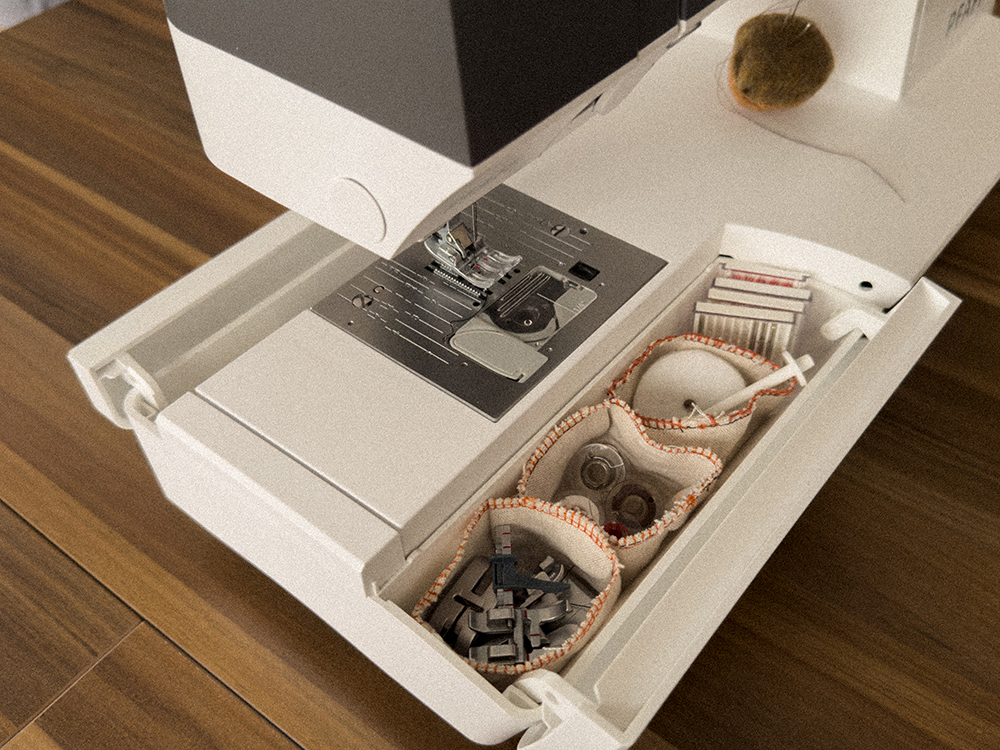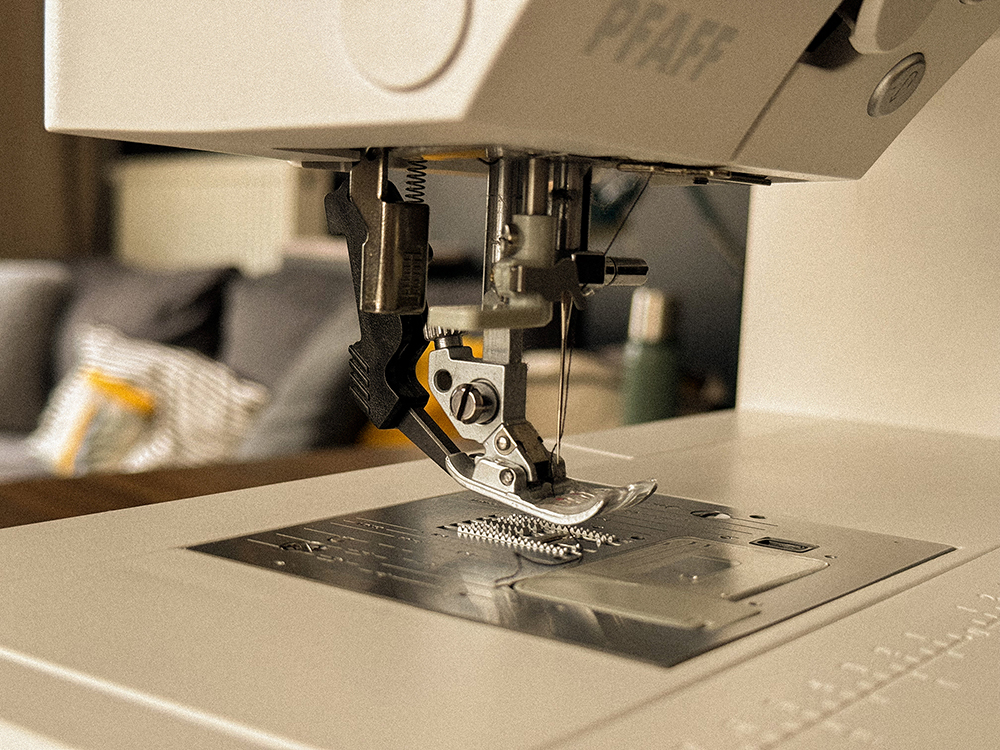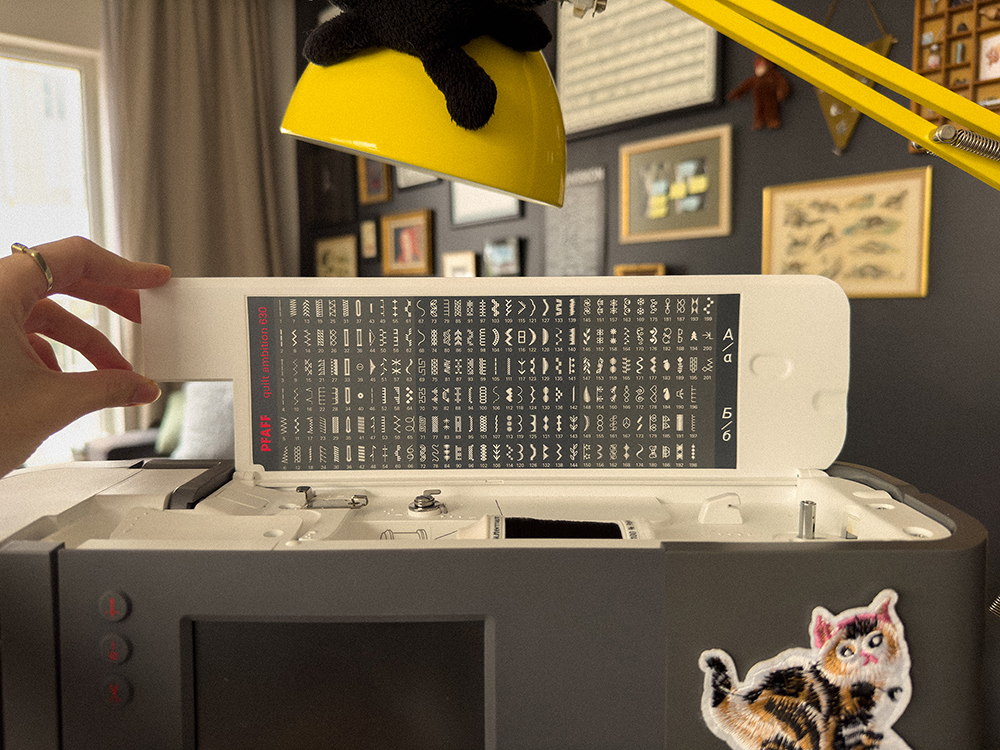Sewing Machine Review: Pfaff Quilt Ambition 630
Having started sewing on a very simple Singer machine, I was over the moon when I upgraded to my Pfaff Ambition 630 3.5 years ago. I wrote a comprehensive review of it on my blog after a couple of months of use, but now that it’s been with me for a few years, I would love to share my long term review with you.
Let’s start with the good: Two of the things I love the most about my Pfaff are its versatility, and its intuitive design. It can handle almost everything I throw at it, from slippery lightweight linens to heavyweight denims and wools, and the way you engage with the machine is very easy to grasp. I particularly love that you can save your favourite stitch settings for easy access, how easy it is to load the bobbin, and the great built-in storage it has.
Perhaps the biggest selling point of the machine is Pfaff’s proprietary IDT system, which is a built-in walking foot. It helps feed the fabric more evenly through the needle, and I found it a joy to have when sewing through multiple layers or tricky fabrics.
It also comes with a million different stitch patterns, including a very fun alphabet feature. I’ve only used a few of these specialty stitches since I mostly make quite classic looking garments, but having the option to add some subtle embroidery is lovely for making those special items.
There are, of course, a couple of things I don’t love about this machine, both affecting the accuracy and precision of my sewing. First, the back stitching button has a noticeable lag of about 2 stitches, meaning the machine won’t start sewing in reverse until about 2 stitches after you start holding the button. I got used to the rhythm of the machine pretty quickly, and I don’t really have a serious problem with this lag, but it would certainly be nice not to have it. Secondly, the machine creates a small thread nest at the beginning of each seam – unless you take the time to pull the bobbin thread up and hold on to the two thread tails as you start sewing. I don’t think these issues are deal breakers, but when combined, they do cause a slight disadvantage in terms of precision sewing.
One final complaint I have is that this machine has its limits when it comes to sewing through multiple layers of heavy materials like denim. I have a pretty difficult time when it comes to sewing on belt loops on my jeans, but it can get through with some help from a hump-jumper and taking it very, very slow.
Overall, I think my Pfaff Ambition 630 and I make a great team. Together we built a whole handmade wardrobe for me and my partner, and it’s been really nice to have a reliable machine that can handle the full range of my sewing projects. For my next machine I would love something a bit more heavy duty and precise, but for now – I just love this machine.









































4 Comments
Jan Ole Sekkeseter
I have a solution for your backstitch delay problem: Use stitch #5 (zigsag). Set stitch width to zero and stitch length to 5. Then you will get straight stitches at 2.5 and no backstitch delay ?
Martha F Davis
I have two Pfaff’s sewing machines including a specialized serger. I purchased my first serger in 1981, it functioned well for me for about 35 years. My other Pfaff’s continue to be amazing. I have been informed as well, by my sewing machine repair person, that the current machines are made in China and are not as hardy as the German ones. The ones I still have are German and function very well. Thank you for your wonderful information. I appreciate that it concurs with what I have learned from sewing machine repair persons, and therefore, validates the information I’ve gathered.
jill barker
I have 2 Pfaff sewing machines. A Pfaff 1473 that I bought in about 1990. This is a West German made machine and the love of my sewing life! I Love this machine, the IDT, the continuous reverse stitch with NO delay once the button is pressed, the front loading bobbin with a low bobbin indictor light. This machine also has a Low gear that allows it sew over anything with added torque.
The other is a Pfaff Ambition Essential. It is made in China. It has a the IDT, a longer throat and brighter lighting than the 1473. It has a top loading bobbin and I am not a fan of these as I think that they don’t give as nice a bobbin thread stitch and require more cleaning. The reverse button also goes into a continuous reverse stitch but as mentioned about the Ambition 630, it always does one stitch forward before engaging reverse and also one stitch in reverse once you turn reverse off. I find this endlessly annoying.
No low gear on this machine so it won’t sew the thicker fabrics that the 1473 will.
I do love the button hole foot that allows you to simply put the button you plan to use in a slot in the back and the machine then makes a perfectly sized button hole.
I also own a Bernina 770 QE. It also has the IDT system and huge front loading bobbins. It will sew anything! It also has a low bobbin indicator but I leave it turned off since it stops your sewing to tell you the bobbin is low (imagine your car stopping on the freeway when the low gas indicator comes on).
This machine has been very under used in my sewing room as I bought it for free motion sewing and only do that one a year or so. But I am starting to use it more this year. The stitches a always perfect and it will sew over any fabric and many fabric layers.
Laurie Jackson
Pfaffs are expensive quality tools, or at least they used to be.
My 1997 Pfaff Tipmatic is the last year Pfaff made all metal guts, mechanical–no computer chips, no greenboards, no drop in plastic bobbin thingamajiggers–machines with finely crafted bobbin cases. It will last forever with servicing every ten or fifteen years. Pfaffs and Berninas are made in China these days and just aren’t the same. The fixit guys sigh when the computerized machines come in because most of the time they can’t fix them. So they send them to “authorized service centers” where the electronic modules that fail are replaced, or the entire machine is replaced. Gone are the days of Swiss watch quality workhorses like my Made in Germany Pfaff Tipmatic. When I push the reverse button my Pfaff goes backwards. No electronic lags or needle up/down nightmares like the needle going through one’s thumb and thumbnail. The Tipmatic sews heavy denim flat felled seams, and I’ve made large heavy canvas and cordura covers and repaired rugged outdoor gear and shoes with my Pfaff as well as sewn sheer silks and charmeuse. I’ve put hundreds, maybe thousands of hours on my Pfaff. Currently I am making myself a new linen wardrobe with it and my Bernina 1150 serger. My backup machine is a computerized Brother that once impaled my thumb. It’s….OK, but no Pfaff.